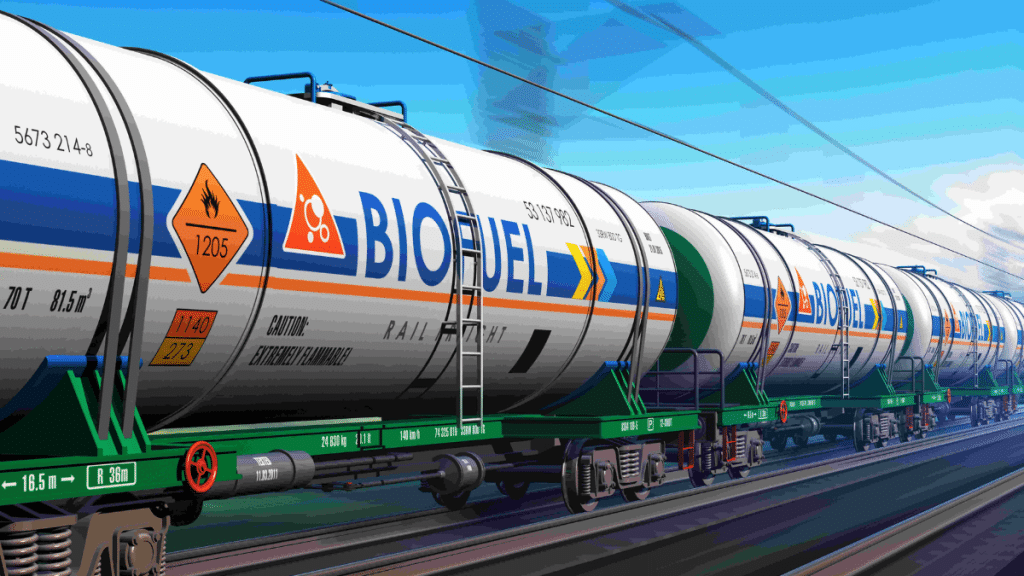The transport enterprise has been one of the most essential sources of greenhouse gas emissions; however, it’s now going through a primary transition as it desires to cut down on carbon emissions. Sustainable biofuels are at the leading edge of this transformation, and they are a super opportunity to replace fossil fuels. These fuels are crafted from renewable natural assets and could substantially lower the carbon footprint of motors, planes, and ships. This may lead to a cleaner and greater environmentally friendly destiny. To understand how biofuels are changing the way humans get around the arena, you want to recognize how they’re getting used and what types there are.
The Imperative for Change: Decarbonizing Transportation
Climate change is one of the biggest problems that the world faces because it relies on fossil fuels for transportation. Cars, lorries, planes, and ships all let out a lot of carbon dioxide and other pollutants into the air. To fix this, we need to take a number of steps, such as electrifying things, making fuels more efficient, and using low-carbon liquid fuels like biofuels. Biofuels have a distinct benefit because they can be mixed with regular fuels or even used directly in current engines with only a few changes. This makes the transition go more smoothly.
First-Generation Biofuels: The Pioneers
Food crops are used to make the initial types of biofuels, which are sometimes called “first-generation” biofuels.
- Bioethanol comes mostly from the fermentation of sugars present in crops like maize in the US and sugarcane in Brazil. It is often mixed with petrol (like E10 and E85) to raise the octane level and lower the amount of pollution. For decades, Brazil has been the world leader in making and using bioethanol.
- Biodiesel is made by transesterifying vegetable oils (like soybean or rapeseed oil) or animal fats. You can use it instead of regular diesel or mix it with other fuels in different amounts (for example, B20). Biodiesel has advantages, such as lower emissions of hydrocarbons and particulate matter, as well as better lubrication.
Second and Third-Generation Biofuels: Towards Greater Sustainability
Second- and third-generation biofuels: moving towards more sustainability
To get around the problems with first-generation biofuels, research and development have been focusing more and more on alternatives that are better for the environment:
- Second-generation biofuels come from non-food biomass, like agricultural waste (corn stover, straw), forestry wastes (wood chips), and specific energy crops (switchgrass, miscanthus) cultivated on land that isn’t very good for farming. Gasification (making syngas) and pyrolysis (making bio-oil) are two technologies that turn these lignocellulosic materials into liquid fuels. These fuels cut down on climate gases by a lot more and don’t compete directly with food crops.
- Third-Generation Biofuels: This group of biofuels uses algae and other microorganisms as feedstocks. Algae can grow quickly in a variety of places, even in wastewater. They don’t need arable land, and they can make a lot of lipids (oils) that can be used to make biofuels. This generation has a lot of potential to make biofuels in large and sustainable quantities.
Biofuels’ Impact on the Transportation Landscape
The use of biofuels is changing the transportation industry in several ways:
- The main benefit is that greenhouse gas emissions are lower. When biomass grows, it absorbs CO2, which cancels out a lot of the CO2 that is generated when it burns. This means that biofuels have substantially lower lifecycle GHG emissions than fossil fuels.
- Improved Energy Security: Making biofuels in the country makes us less dependent on fossil fuels from other countries, which makes our energy supply more stable and independent.
- Economic Opportunities: The biofuel sector offers jobs in farming, research, processing, and distribution, which helps rural economies grow.
- Compatibility with Existing Infrastructure: Many advanced biofuels are “drop-in,” which means that engines, pipelines, and refuelling stations don’t need to be completely rebuilt, which speeds up their use.
- Addressing Hard-to-Electrify Sectors: Biofuels offer a practical and quick approach to cut carbon emissions in heavy-duty road transport, aviation, and shipping, where full electrification is difficult because of battery weight or range limits.
Biofuels have a lot of potential, but they also have a lot of problems, like high production costs, the need to be able to scale up, and logistical issues. The food vs. fuel debate is still very controversial, especially when it comes to first-generation biofuels. It is also important that biofuel production should not affect food security or cause land-use changes that can’t be sustained. This means that we need to pay a lot of attention to second- and third-generation biofuels, waste-to-energy pathways, and smart farming methods. To move the transportation sector towards a truly green future, we need good energy transition policies that encourage the development of sustainable feedstocks, support sophisticated conversion technologies, and set up strong sustainability certification programs.
